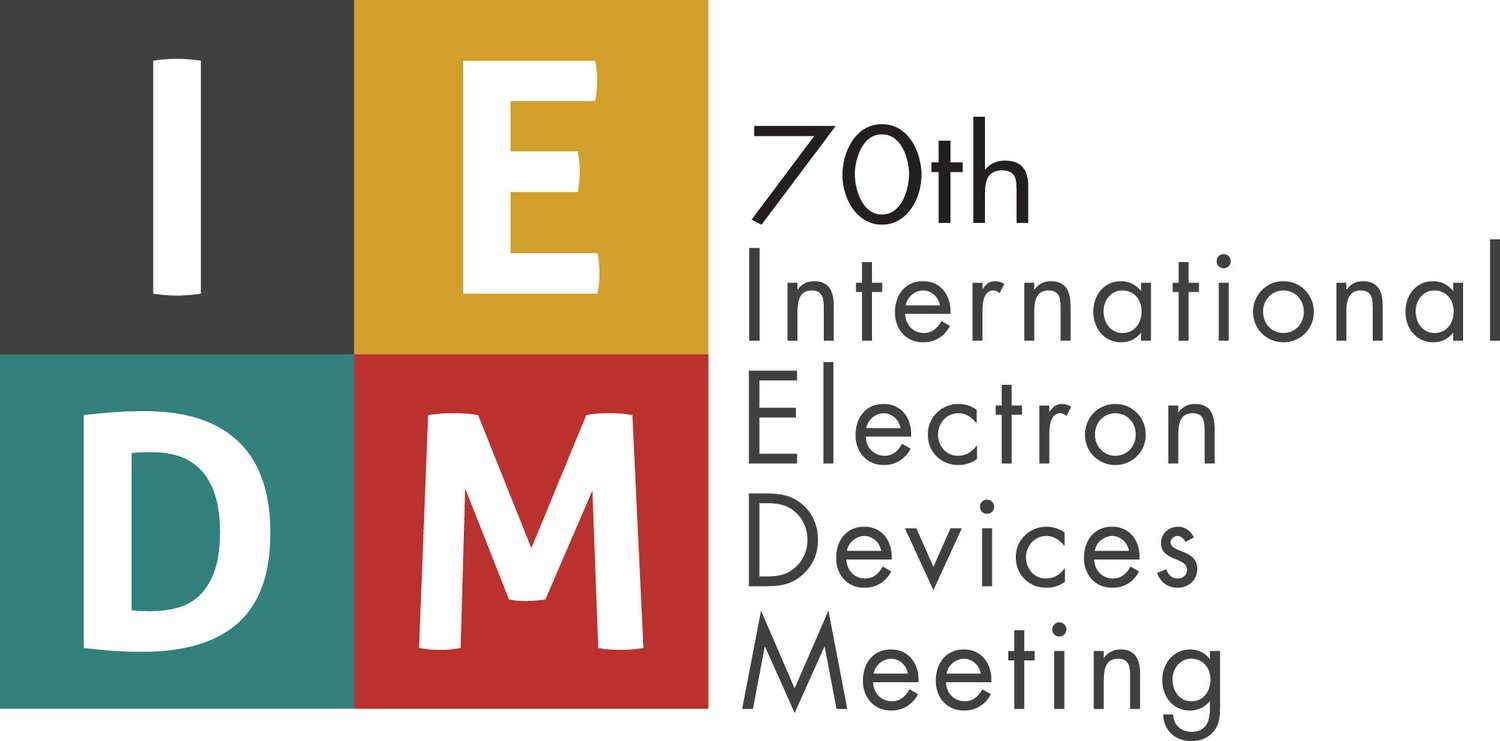
Call for Papers - Overview
Inside Call for Papers: Overview l Topics of Interest l Preparation of Papers l Electronic Submission l Information for Students l Agreement Not to Pre-Publish l Late News Papers
2024 IEEE IEDM Call for Papers
The Annual IEEE International Electron Devices Meeting
will be held at the Hilton San Francisco Union Square
San Francisco, CA, December 7-11, 2024.
Key Dates:
Late News Submission Deadline: August 19, 23:59 PDT
Submission Deadline: Thursday, July 11, 23:59 PDT
The paper submission deadline is July 11 for submission of four-page, camera-ready papers to provide faster dissemination of the conference’s cutting-edge results. Accepted papers will be published as-is in the proceedings.
ADVANCED LOGIC TECHNOLOGY (ALT)
Typical Themes
CMOS platform technologies & opportunities
Logic device performance and circuit design challenges
Advanced, novel process integration schemes and (applications-driven) scaling approaches
Process module innovations and progresses in process control & process metrology
Device technology co-optimization (DTCO), System technology co-optimization (STCO)
New or Trending Areas
GAA (vertically stacked) nanosheets based devices and circuits; new channel materials
Sequential, monolithic 3D integration, heterogenous chiplets, 2.5/3D integration, thermal management
Logic for memory
Interconnects (BEOL, Backside power delivery)
BEOL compatible transistors
EMERGING DEVICE and COMPUTE TECHNOLOGY (EDT)
Typical Themes
2D and devices on low-dimensional materials
Non-CMOS emerging devices
Neuromorphic and approximate computing devices
Spintronic and magnetic devices
Steep-slope devices
Quantum computing devices
New or Trending Areas
Topological materials and devices, and phase transitions transistors
Emerging state machines, time dynamical systems, approximate computing
Novel cryogenic devices
MEMORY TECHNOLOGY (MT)
Typical Themes
Conventional memories
Emerging memories
3D memory technologies
Memories for AI and near-memory computing applications
New or Trending Areas
Memories to break the memory wall
Memory-enabled artificial intelligence applications
Memory-Logic 3D stacking
System-technology co-optimization
New memory hierarchy
MODELING AND SIMULATION (MS)
Typical Themes
Technology CAD and benchmarking
Advanced logic and memory device modeling
Atomistic material, process, and interconnect simulation
Compact models for DTCO
Alternative computing device modeling
Nanoscale (bio) sensors modeling
Typical Themes
SRAM, DRAM, Flash, ReRAM, MRAM, PCRAM, ferroelectric memory, and memory selector for analog in-memory deep learning
Memory, logic, and nanoelectronic devices with novel functions and/or materials for neuromorphic computing
Probabilistic and approximate computing enabled by stochastic behaviors of devices and materials
Emerging neuromorphic computing algorithms enabled by memory, logic, and nanoelectronic devices
New or Trending Areas
Multi-scale simulation with hybrid techniques
Advanced packaging and 3D integration modeling
Thermal modeling
Low-temperature and quantum device modeling
Device modeling for photonics
Device modeling for in-memory and in-sensor computing
NEUROMORPHIC COMPUTING (NC)
New or Trending Areas
Device-algorithm co-optimization
Monolithic 3D integration for neuromorphic computing
Neuromorphic sensors and in-sensor computing
OPTOELECTRONICS, DISPLAYS, and IMAGING SYSTEMS (ODI)
Typical Themes
Heterogeneous optoelectronic integration including sources, modulators or detectors
Neuromorphic photonics
Single photon emitters and detectors
Luminescent devices based on new materials including perovskites and quantum dots
Displays and imagers for augmented or virtual reality
Holographic devices and displays
Displays with unconventional form or size
Photodetectors and imagers with new materials or flexible platform and printed electronics
Imagers with unconventional spectral bandwidth, high sensitivity, or high time-resolution
New or Trending Areas
Photonic devices for quantum computation and sensing
Intelligent Image Sensors
In-display and under-display Sensors
POWER, MILLIMETER WAVE AND ANALOG TECHNOLOGY (PMA)
Typical Themes
Power and/or high speed (microwave to THz devices) devices, modules, and systems
Manufacturing processes, device design, modeling, physics, and reliability of power and/or high-speed
devices
Fundamental studies on doping, traps, interface states, and device reliability for power and/or high-speed switching devices
Micro and mm-wave devices, such as PAs, LNAs, switches and mixers.
Energy harvesting devices and circuits
Tunable passives, SAW/BAW devices, antenna arrays
New or Trending Areas
Wide bandgap and ultra-wide bandgap semiconductors such as SiC, (Al)GaN, diamond, β-Ga2O3, BN
Power devices for applications for automotive and
aviation to smart grid
Device and circuits for 5G and 6G
Antenna arrays and beam forming
Extreme environment power and high-speed devices
RELIABILITY OF SYSTEMS and DEVICES (RSD)
Typical Themes
Component level of FEOL/MEOL/BEOL reliability model
Robustness and security of electronic circuits and systems
Reliability of conventional and emerging memories
Circuits, systems-level reliability, and aging
Thermal and PID/charging management in existing and novel process integration
Reliability of RF/mm-wave/5G in high-frequency
applications
Reliability of devices, circuits, and systems for more-than-Moore applications, automotive, aerospace and bio-applications (BioFETs, DNA detection, etc.)
Reliability of cryogenic devices for future quantum
computing applications
New or Trending Areas
Reliability of new materials and/or new architectures for transistors
Reliability of advanced 2.5D/3D IC advanced package
Design for testing (DFT) / Design for reliability (DFR) solutions for improved reliability
SENSORS, MEMS, and BIOELECTRONICS (SMB)
Typical Themes
Physical and biochemical integrated sensors
Energy harvesting and storage devices
Flexible devices for wearable applications
MEMS for Internet of Things
Bio-electronic interfaces and implantable devices
New or Trending Areas
Intelligent sensors with embedded AI
Sensors and devices for human-machine interface
Hybrid organic/inorganic microfabrication and devices
Sensors and motors for haptics

